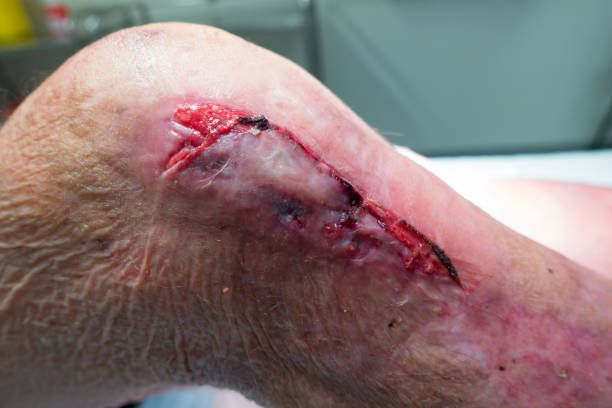A Guide to Degloved Face
A degloved face is a severe and traumatic injury that occurs when the skin and underlying tissues are forcefully detached from the underlying structures of the face. This type of injury is often associated with high-impact accidents, such as car crashes or industrial accidents. Understanding the nature of a degloved face and its treatment is crucial for medical professionals and individuals seeking information on this devastating injury. In this guide, we will provide an overview of a degloved face, its causes, symptoms, treatment options, and potential outcomes.
Causes of a Degloved Face:
A degloved face typically occurs due to significant trauma or crushing forces applied to the face. Some common causes include:
- Motor vehicle accidents: Collisions or impacts during car, motorcycle, or bicycle accidents can result in a degloved face.
- Workplace accidents: Industrial mishaps involving heavy machinery or equipment can lead to severe facial injuries.
- Falls from heights: Falling from a significant height and landing face-first can cause a degloved face.
- Sports injuries: Certain sports, such as motor racing, extreme sports, or contact sports, may increase the risk of a degloved face if proper protective gear is not worn.
Symptoms of a Degloved Face:
The symptoms of a degloved face can vary depending on the extent and severity of the injury. Common signs and symptoms may include:
- Partial or complete detachment of the facial skin from the underlying structures.
- Severe facial swelling and bruising.
- Exposed muscles, tendons, or bones.
- Bleeding, both external and internal.
- Pain and tenderness.
- Difficulty moving the facial muscles.
- Impaired or loss of sensation in the affected area.
- Disfigurement or deformity of the face.
Treatment of a Degloved Face:
The treatment of a degloved face requires immediate medical attention and often involves a multidisciplinary approach. The primary goals of treatment include:
- Stabilization: Addressing any life-threatening injuries and ensuring the patient’s overall stability.
- Wound care: Cleaning and debriding the affected area to prevent infection and promote healing.
- Reattachment: Surgical procedures may be performed to reattach the degloved skin to the underlying structures, including muscles, bones, and blood vessels.
- Reconstruction: In cases where reattachment is not possible, reconstructive surgery may be necessary to restore the appearance and function of the face.
- Pain management: Medications and other pain management techniques are utilized to alleviate discomfort during the recovery process.
- Rehabilitation: Physical therapy and facial exercises may be recommended to restore movement, strength, and functionality to the affected facial muscles.
Potential Outcomes:
The outcomes of a degloved faces injury can vary significantly based on the severity of the trauma, the timeliness of treatment, and the individual’s overall health. Potential outcomes may include:
- Successful reattachment: In some cases, the degloved skin can be successfully reattached, resulting in the restoration of facial function and aesthetics.
- Functional impairment: Despite treatment, some individuals may experience long-term functional limitations, such as difficulty with facial movements, eating, or speaking.
- Psychological impact: A degloved faces can have a profound psychological impact on the individual, potentially leading to emotional distress, body image issues, and post-traumatic stress disorder (PTSD).
- Scarring and disfigurement: Even with successful treatment, scarring and disfigurement may remain, impacting the individual’s appearance and self-esteem.
Conclusion:
A degloved faces is a severe and traumatic injury that requires immediate medical attention. Understanding the causes, symptoms, treatment options, and potential outcomes associated with this type of injury is essential. If you or someone you know experiences a degloved faces or a similar traumatic injury, seeking medical assistance promptly is crucial for the best possible outcome.




